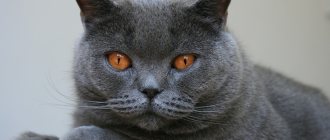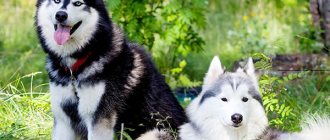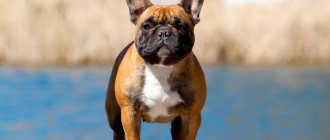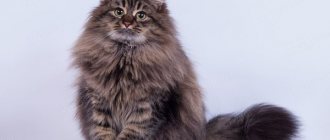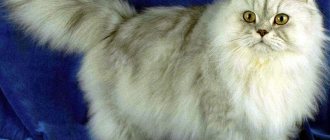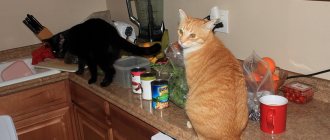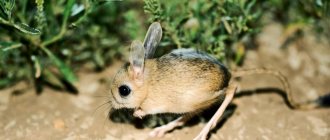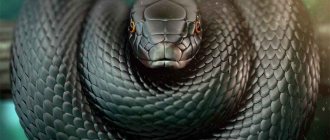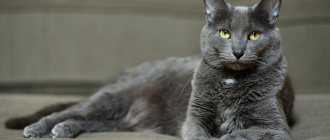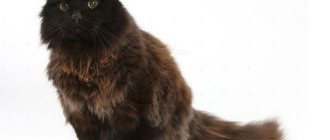Cats are one of the most popular human pets. And this is not surprising. After all, they are very interesting and intelligent creatures. Cats can be very affectionate companions, but they also often have strong personalities and definitely deserve respect. Usually such an animal in the house becomes not just a cute pet, but a full member of the family.
Photo: pixabay.com
There are many different cat breeds in the modern world. They differ in appearance, character, coat length and, of course, size. Some people love miniature representatives, while others dream of owning a domestic lynx, large, but still domestic. Therefore, breeders are actively breeding large breeds of cats, which have been gaining popularity recently.
Big cats require special care and a lot of attention from their owners.
First of all, you need to pay attention to your pet’s diet. Some people think that a large animal must eat a lot. But it is not so. Of course, compared to small breeds, they require more food, but not by much. Excessive eating can lead to obesity. Therefore, it is better to consult a specialist about the diet for such a pet.
The ancestors of most large breeds are wild cats. Therefore, such pets must be given the opportunity to lead an active lifestyle. If the animal lives in an apartment, it is advisable to periodically give it walks or organize a play area at home.
Also, many large domestic cats are highly intelligent and amenable to training. The main thing here is to approach education issues correctly. Since these animals are quite willful and independent. Therefore, in the process of raising it, it is important to maintain respect for the pet and not humiliate its self-esteem. Then you can achieve great success in training.
The main thing to remember is that no matter how big a cat is, it remains a pet and not a wild animal. Therefore, she needs care, love and affection.
Our editors have analyzed various magazines and websites about animals, and today we present a ranking of the 12 largest cat breeds.
| Rating | Origin |
| 1. Savannah | USA |
| 2. Maine Coon | USA |
| 3. Housey | USA |
| 4. Ragdoll | USA |
| 5. Siberian | Russia |
| 6. Pixiebob | USA |
| 7. Norwegian Forest Cat | Norway |
| 8. British Shorthair cat | Great Britain |
| 9. Turkish Van | Türkiye |
| 10. Carthusian cat | France |
| 11. American Bobtail | USA |
| 12. Kurilian Bobtail | Russia |
Mr. Cat advises: British cat
These short-haired beauties can be very large, their weight reaches 9-10 kg. In certain circles it is believed that Carroll's Cheshire Cat belonged to this breed (or they are his descendants).
British kitten
They are characterized by phlegmatic, sedate, balanced, sometimes excessive. Because of their qualities, they tend to gain excess body weight. At the same time, the British have a distinct character, and some representatives can even be quite aggressive.
A distinctive feature of all large breeds is a fairly high intelligence. Big cats, as a rule, are very peaceful, do not like conflicts, do not impose themselves, understand everything and become true friends of humans - very devoted and faithful. Keeping such a pet at home is a pleasure.
Among the many interesting facts about the cat family is information about who holds the title of “the strongest cat in the world.” Since many people mean slightly different concepts by the word “strong,” several criteria for the strength of cats will be given below.
TOP 9
Let's look at the largest cat breeds known and bred today.
Savannah
Today the Savannah is the leader in the ranking of large breeds of domestic cats. It was bred by American breeders who crossed African servals (wild bush cat) and domestic cats (Egyptian Mau, Bengal, Ocicat).
Breeders set themselves the task of obtaining a cat that is adapted to living next to humans, is friendly and at the same time has the characteristics of its wild counterparts: exotic color, large size.
Since 2015, the Savannah has been considered the most expensive cat breed. The price depends on the amount of Serval blood in an individual. The most expensive are considered to be savannas, in which one of the parents is a wild serval, that is, having 50% of its genes.
Characteristic features of the breed are a long body, an elongated neck and limbs, and large cupped ears. The savanna reaches its maximum potential size by three years. These are cats with very high intelligence, and their devotion to their owner is not inferior to that of a dog.
Savannah should not be kept in a city apartment: she needs space, so only owners of country houses with plots should get a cat. This is an active animal that needs a lot of space and movement. Unlike other domestic cats, representatives of this breed are not afraid of water, they love to splash and play, so the presence of a pond or pool will be a pleasant surprise for your four-legged pet.
Chausie (housey)
A relatively new breed, bred by selecting the wild jungle cat and some domestic breeds. The weight of an adult can reach 10-12 kg, sometimes more.
They are friendly by nature, love to play, but prefer to communicate at a distance and it is better not to pick them up. The Hausi is devoted to her owner and loves to spend time with him. These cats are excellent hunters, strong and muscular.
Maine Coon
The Maine Coon occupies a leading position in the top ten largest domestic cats; before the breeding of the Savannah, it was the largest representative. He comes from North America; the ancestors of modern Maine Coons are considered to be Maine cats. There are many legends about the origin; according to one of them, the ancestors of such cats were raccoons.
Representatives of this breed reach a height of 0.4-0.45 meters, and weigh up to 8-9, sometimes 15 kg.
The body length of a Maine Coon, including its tail, can be more than a meter (the record holder is a cat whose length was 123 cm).
Due to their origin, Maine Coons are very hardy and well adapted to unfavorable climates. They have long and thick hair that grows even between their toes, and a large and fluffy tail. Maine farmers valued these cats for their excellent hunting qualities.
Domestic Maine Coons have a fairly friendly and peaceful character and get along well with children and other animals. Despite their size, cats of this breed are very neat, energetic and love to play. Maine Coons are very self-sufficient; they will not get in the way of their owners or ask them to be picked up.
Read more about Maine Coons on the Mister Cat portal.
Siberian
These beauties with long, thick hair and a fluffy tail are the largest representatives of Russian domestic cats. The weight of an adult can reach 9-10 kg.
Siberians are excellent hunters with highly developed instincts, so they prefer space. The cold does not frighten them; they tolerate the conditions of small apartments much worse, where it is difficult for them to be active.
Cats of this breed are willful, independent, but can become a wonderful friend.
Norwegian forest
These beautiful semi-long-haired beauties are large in size (up to 9-10 kg) and have a strong build. They are excellent hunters and fishermen, and are also the only cats who can descend from a height head down. Maybe that's why they love to explore the highest places in the apartment.
Norwegian cats have good manners, they are gentle and peaceful in nature, it is extremely difficult to provoke them into conflict or hooliganism. They get along well even with restless children and naughty dogs.
Representatives of this breed are very intelligent and quick-witted, love to play and are active until adulthood. In terms of their affection for people, they are very reminiscent of dogs; unlike other cats, Norwegians sincerely love a person, and not a house.
Due to the fact that such cats have very strongly developed instincts, including the instinct of self-preservation, they prefer to stay away from guests and strangers, but they show tenderness towards members of their family.
They do not like to be cuddled or placed on laps; they much prefer to sit next to a person, sing songs to him, and they love to be stroked and scratched. If a person tries to cuddle or kiss a “Norwegian”, he will quickly and clearly make it clear that he cannot stand such “tenderness”.
Ragdoll
Representatives of this breed fully justify their name, which can be translated into Russian as “rag doll.” These are phlegmatic people who allow you to do whatever you want with them: squeeze, kiss, comb, carry in your arms. Although this fluffy miracle cannot be carried around much: a Ragdoll cat can reach a weight of 10 kilograms or more.
These blue-eyed, soft-furred creatures are descendants of Persian, Angora and Burmese cats. Very friendly, calm and non-conflict purrs. They don’t like to hunt: it’s beneath their dignity, and they’re just too lazy. Perfect for apartment living.
Kurilian Bobtail
A distinctive feature of this breed is not only its large size (up to 7 kg), but also its short curled tail, reminiscent of a pompom. The description of the standard states that the tail should be from 3 to 8 cm in length and have several bends.
The homeland of these cats is the islands of the Kuril ridge, so they are not afraid of water, easily tolerate low temperatures, and know how and love to fish.
By nature, Kuril Bobtails are in many ways reminiscent of dogs: they are strongly attached to their owner (they choose only one, maximum two family members in this capacity), smart, inquisitive, and active. Such cats and dogs love games, for example, chasing a ball or a stick, many of them enjoy walking in a harness.
Pixie bob
These rather large cats can reach a weight of 8 kg, obtained artificially by Canadian breeders. The purpose of breeding was to obtain a breed suitable for domestic living and with the external characteristics of the American red lynx.
To do this, short-tailed forest cats living in North America were crossed with various breeds of domestic cats. The result was large pixie-bobs, which are also called short-tailed elves (after the first representative of the breed - Pixie, which means “fairy” or “elf”).
Despite the fact that outwardly cats of this breed look quite formidable, they are the sweetest creatures, they are extremely tactful, love tenderness, but do not require excessive attention.
Turkish van
This is one of the oldest breeds of domesticated cats. Vans are of natural origin, unlike many large cats; artificial selection has nothing to do with them. Their homeland is part of Turkey, the vicinity of Lake Van. The name of the breed comes from this toponym.
Adults reach a height of 0.4 m, a length from 0.9 to 1.2 m. Weight can be up to 9-10 kg.
The traditional color of the Van cat is considered to be a rich apricot color of the coat, and on the tail there are several rings of a more saturated shade.
A characteristic feature is the complete absence of hydrophobia, which is inherent in most domestic breeds. They love to play with streams of water, listen to their murmur, and can get completely into the water.
They have no undercoat, and the coat repels water and dries quickly. Thanks to this feature, they are excellent fishermen. They are very energetic, love to run and jump, involving people in their games. Their character is quite friendly, but they can demonstrate remarkable temper when they don’t like something.
If an animal is accustomed to a harness from childhood, then you can take it for walks: Vans love this very much, as they are very curious and active.
The energy of Vans should be taken into account by those who are planning to have a pet of this breed: they need to be played and exercised with them often, constantly updating their set of toys.
The biggest cats in the world
Some wild cats (tigers, lions, pumas, leopards and others) rightfully bear the title of the largest representatives of the cat family as a whole.
Below is a list of the largest cats on our planet.
Not everyone knows about this representative of the cat family. A liger is a hybrid of a lion and a tiger (specifically a female tiger and a male lion). Ligers grow throughout their lives because... the gene responsible for growth inhibition is practically absent in them. The weight of ligers can reach 350-400 kilograms, and the body length is approximately three to four meters.
Place number two on the list of the largest predatory cats is occupied by the well-known handsome tigers. Their weight is approximately 200-300 kilograms, and their body length can reach 3.6 meters.
In terms of “size” in the cat family, the king of beasts takes an honorable third place. Adult lions weigh about 200-250 kilograms, and their body length usually reaches three meters.
The most powerful wild cats
So, we learned about which representatives of the cat family are rightfully considered the largest and strongest in the world. Now it's the turn of the wild cats.
Top 10 most powerful wild cats:
- Ocelot
Ocelot is the strongest cat in the world (if we take into account only representatives of wild cats). Its body weight reaches 17 kilograms, and its length is one and a half meters.
A wild cat that lives exclusively in the vastness of China takes second place in the top 10. The animal reaches 1.4 meters in length, and its body weight averages 8-10 kilograms .
The so-called “bush cat” weighs approximately 17 kilograms and is about 1.4 meters long. In addition, servals are flexible and capable of jumping high.
This cute cat, known for its ability to catch fish, weighs about 14 kilograms and reaches a length of just over one meter. A very strong cat.
The African cat, which is called golden because of its color, is about a meter long and weighs about 13 kilograms.
In sixth place in the top is the Amur forest cat, a beautiful representative of the family, her weight is only 7 kilograms , and her body length is one meter.
A beautiful cat that lives in damp places, near swamps and reed thickets, weighs about 10 kilograms. Its body is 80-90 cm long.
The margay or long-tailed cat is very similar to our pets. Its weight does not exceed seven kilograms, its body length is about 70 cm.
The grass cat, otherwise known as the Pampas cat, weighs about six kilograms and reaches 40 centimeters in length . It is quite strong, although it avoids large predators.
The top 10 is completed by the Pallas' cat, whose color is somewhat reminiscent of a leopard. Its body length is about a meter, weight - up to six kg. Its bite is quite strong, despite the small weight of the animal.
Table of norms and weight deviations for cats of different breeds
Body weight directly depends on the constitution of the animal. Like people, some cats have a slight figure, others can boast of medium size, and still others will initially be quite large. Therefore, before running to the veterinarian, you need to determine, taking into account the breed, whether your pet has weight problems (overweight or underweight).
Table of body weight of an adult pet with a slight build, depending on the breed, weight is indicated in kilograms (on a mobile phone, the table can be scrolled horizontally with your finger):
| Breed | Normal indicator | Slight excess | Risk of Obesity |
| Abyssinian | 3.4 | 3.7 | 4.1 |
| American Bobtail | 4.0 | 4.4 | 4.8 |
| Angora | 3.2 | 3.5 | 3.8 |
| Balinese | 3.1 | 3.4 | 3.7 |
| Bengal | 4.0 | 4.4 | 4.8 |
| Burma | 3.6 | 4.0 | 4.3 |
| Bombay | 3.6 | 4.0 | 4.3 |
| British Shorthair | 3.8 | 4.2 | 4.6 |
| Burmanskaya | 3.1 | 3.4 | 3.7 |
| Burmilla | 3.4 | 3.7 | 4.1 |
| Havana Brown | 3.2 | 3.5 | 3.8 |
| Himalayan | 3.8 | 4.2 | 4.6 |
| Devon Rex | 2.8 | 3.1 | 3.4 |
| Egyptian Mau | 3.0 | 3.3 | 3.6 |
| Cymric | 3.5 | 3.8 | 4.2 |
| Cornish Rex | 2.7 | 2.9 | 3.2 |
| Korat | 3.2 | 3.5 | 3.8 |
| Manx | 3.5 | 3.8 | 4.2 |
| Munchkin | 3.2 | 3.6 | 3.9 |
| Maine Coon | 5.8 | 6.4 | 7.0 |
| Nibelung | 2.5 | 2.8 | 3.0 |
| Norwegian forest | 3.2 | 3.6 | 3.9 |
| Oriental | 3.0 | 3.3 | 3.6 |
| Ocicat | 4.4 | 4.8 | 5.3 |
| Persian | 3.8 | 4.2 | 4.6 |
| Russian blue | 2.5 | 2.8 | 3.0 |
| Ragdoll | 5.0 | 5.5 | 6.0 |
| Selkirk Rex | 3.6 | 4.0 | 4.4 |
| Siamese | 3.1 | 3.4 | 3.7 |
| Siberian | 4.0 | 4.4 | 4.8 |
| Singaporean | 2.5 | 2.7 | 3.0 |
| Snow-shoe | 3.4 | 3.7 | 4.1 |
| Somalia | 3.2 | 3.6 | 3.9 |
| Sphinx | 3.4 | 3.7 | 4.1 |
| Tiffany | 4.0 | 4.4 | 4.8 |
| Tonkinese | 3.5 | 3.8 | 4.2 |
| Turkish Angora | 3.3 | 3.6 | 3.9 |
Table of body weights for cats that are of average build from birth (on a mobile device you can scroll the table horizontally with your finger):
| Breed | Normal indicator | Slight excess | Risk of Obesity |
| Abyssinian | 4.3 | 4.7 | 5.1 |
| American Bobtail | 5.0 | 5.5 | 6.0 |
| Angora | 4.0 | 4.4 | 4.8 |
| Balinese | 3.9 | 4.2 | 4.6 |
| Bengal | 5.0 | 5.5 | 6.0 |
| Burma | 4.5 | 5.0 | 5.4 |
| Bombay | 4.5 | 5.0 | 5.4 |
| British Shorthair | 4.8 | 5.2 | 5.7 |
| Burmanskaya | 3.9 | 4.2 | 4.6 |
| Burmilla | 4.3 | 4.7 | 5.1 |
| Havana Brown | 4.0 | 4.4 | 4.8 |
| Himalayan | 4.8 | 5.2 | 5.7 |
| Devon Rex | 3.6 | 3.9 | 4.3 |
| Egyptian Mau | 3.8 | 4.1 | 4.5 |
| Cymric | 4.4 | 4.8 | 5.2 |
| Cornish Rex | 3.4 | 3.7 | 4.0 |
| Korat | 4.0 | 4.4 | 4.8 |
| Manx | 4.4 | 4.8 | 5.2 |
| Munchkin | 4.1 | 4.5 | 4.9 |
| Maine Coon | 7.3 | 8.0 | 8.8 |
| Nibelung | 3.2 | 3.5 | 3.8 |
| Norwegian forest | 4.1 | 4.5 | 4.9 |
| Oriental | 3.7 | 4.1 | 4.4 |
| Ocicat | 5.5 | 6.1 | 6.6 |
| Persian | 4.8 | 5.2 | 5.7 |
| Russian blue | 3.2 | 3.5 | 3.8 |
| Ragdoll | 6.3 | 6.9 | 7.5 |
| Selkirk Rex | 4.6 | 5.0 | 5.5 |
| Siamese | 3.9 | 4.2 | 4.6 |
| Siberian | 5.0 | 5.5 | 6.0 |
| Singaporean | 3.1 | 3.4 | 3.7 |
| Snow-shoe | 4.3 | 4.7 | 5.1 |
| Somalia | 4.1 | 4.5 | 4.9 |
| Sphinx | 4.3 | 4.7 | 5.1 |
| Tiffany | 5.0 | 5.5 | 6.0 |
| Tonkinese | 4.4 | 4.8 | 5.2 |
| Turkish Angora | 4.1 | 4.5 | 4.9 |
| Turkish Van | 5.0 | 5.5 | 6.0 |
| Chartreuse | 4.8 | 5.3 | 5.8 |
| Scottish lop-eared | 5.0 | 5.5 | 6.0 |
| Exotic Shorthair | 4.8 | 5.2 | 5.7 |
| Javanesian | 3.6 | 3.9 | 4.3 |
| Japanese Bobtail | 3.6 | 3.9 | 4.3 |
Weight for cats that have a large build from birth (on a mobile phone you can scroll the table horizontally with your finger):
| Breed | Normal indicator | Slight excess | Risk of Obesity |
| Abyssinian | 5.1 | 5.6 | 6.1 |
| American Bobtail | 6.0 | 6.6 | 7.2 |
| Angora | 4.8 | 5.3 | 5.8 |
| Balinese | 4.6 | 5.1 | 5.5 |
| Bengal | 6.0 | 6.6 | 7.2 |
| Burma | 5.4 | 5.9 | 6.5 |
| Bombay | 5.4 | 5.9 | 6.5 |
| British Shorthair | 5.7 | 6.3 | 6.8 |
| Burmanskaya | 4.6 | 5.1 | 5.5 |
| Burmilla | 5.1 | 5.6 | 6.1 |
| Havana Brown | 4.8 | 5.3 | 5.8 |
| Himalayan | 5.7 | 6.3 | 6.8 |
| Devon Rex | 4.3 | 4.7 | 5.1 |
| Egyptian Mau | 4.5 | 5.0 | 5.4 |
| Cymric | 5.2 | 5.7 | 6.3 |
| Cornish Rex | 4.0 | 4.4 | 4.8 |
| Korat | 4.8 | 5.3 | 5.8 |
| Manx | 5.2 | 5.7 | 6.3 |
| Munchkin | 4.9 | 5.3 | 5.8 |
| Maine Coon | 8.8 | 9.6 | 10.5 |
| Nibelung | 3.8 | 4.2 | 4.5 |
| Norwegian forest | 4.9 | 5.3 | 5.8 |
| Oriental | 4.4 | 4.9 | 5.3 |
| Ocicat | 6.6 | 7.3 | 7.9 |
| Persian | 5.7 | 6.3 | 6.8 |
| Russian blue | 3.8 | 4.2 | 4.5 |
| Ragdoll | 7.5 | 8.3 | 9.0 |
| Selkirk Rex | 5.5 | 6.0 | 6.6 |
| Siamese | 4.6 | 5.1 | 5.5 |
| Siberian | 6.0 | 6.6 | 7.2 |
| Singaporean | 3.7 | 4.1 | 4.5 |
| Snow-shoe | 5.1 | 5.6 | 6.1 |
| Somalia | 4.9 | 5.3 | 5.8 |
| Sphinx | 5.1 | 5.6 | 6.1 |
| Tiffany | 6.0 | 6.6 | 7.2 |
| Tonkinese | 5.2 | 5.7 | 6.3 |
| Turkish Angora | 4.9 | 5.4 | 5.9 |
| Turkish Van | 6.0 | 6.6 | 7.2 |
| Chartreuse | 5.8 | 6.3 | 6.9 |
| Scottish lop-eared | 6.0 | 6.6 | 7.2 |
| Exotic Shorthair | 5.7 | 6.3 | 6.8 |
| Javanesian | 4.3 | 4.7 | 5.1 |
| Japanese Bobtail | 4.3 | 4.7 | 5.1 |
Strong domestic cat
The strongest domestic cat we are used to is, of course, the Maine Coon.
Cats of this breed are distinguished by their intelligence, fairly developed muscles and endurance. Nevertheless, they are beautiful and graceful, move gracefully and look truly luxurious (this can be seen in the photo). In addition, this breed is very expensive.
So, the strongest cats are the Maine Coon breed.
There are two options for having a huge cat at home. The first option comes down to feeding the pet without controlling the process of its absorption of food, and then the large dimensions of the animal will be ensured. The second option comes down to getting a special breed of cat at home, which is large in size.
Causes of aggressiveness in cats
Cat rage can be triggered by several factors, the most common of which are:
- illness and poor health;
- fear of people;
- hunting instincts;
- self-defense;
- genetic predisposition.
Any cat is, first of all, a predator with its own needs and instincts, which can manifest themselves at any moment. This should always be remembered, especially if you decide to get a pet from the list of potentially dangerous and aggressive breeds.
Savannah
This animal amazes others with many of its characteristics, namely height, weight, etc. But the main surprise awaits those who decide to buy a kitten of this breed for themselves. The price is truly astronomical, although it is due to the fact that this breed has only 1 thousand individuals, and the first offspring were born only in the spring of 1986.
The basis of this breed was the domestic cat and the wild African serval. As a result, an animal was born, distinguished by its unique color, large ears, long legs, as well as fantastic jumping ability (up to 3 meters) and love for the water element. Savannah not only loves to swim, she is an excellent swimmer and is able to cover enormous distances across the surface of the water.
In addition, the Savannah has a developed intellect, she has an easy-going character and is devoted to her owner.
Maine Coon
This breed rightfully takes second place in the list of the largest cat breeds. Representatives of this breed have a weight of about 15 kilograms and a rather menacing appearance. At the same time, they find a “common language” with both adults and children, without offending pets either.
These animals have a characteristic color and a powerful tail, like raccoons. Thanks to these features, the name appeared, which translated means “Mensky raccoon”. Maine is the name of the state in the United States where the ancestors of Maine Coons were once kept on farms.
The breed is practically devoid of disadvantages, with the exception of its astronomical cost. Cats are easy to train and always demonstrate nobility, intelligence, calm disposition and grace.
Ragamuffin
California is considered the birthplace of this breed, and it was born as a result of the efforts of Ann Baker, who decided to modify the Ragdoll. So she began to crossbreed the Ragdoll with other cat breeds, such as the Persian, the Yard Longhair, and the Himalayan.
As a result of these efforts, a breed was born that was called “cherub,” but at the last moment it was renamed and began to be called “ragamuffin,” which means “ragamuffin.”
Adults weigh at least 10 kilograms and acquire impressive sizes, although they mature only at 4 years of age. The breed does not have a beautiful, proportional physique, but it is distinguished by a variety of coat colors.
Normal weight cat
An animal with normal weight has a harmoniously built body and a clearly defined waist. If you look at a cat from above, its body resembles an hourglass. The ribs are palpable, but do not protrude and are devoid of a large layer of fat. The side view shows a well-toned abdomen.
However, during a visual inspection, the characteristics of the breed should be taken into account. While some cats look sophisticated, others are always heavy and stocky. It happens that the breed standard does not exclude the presence of a small abdominal fold.
Kurilian Bobtail
The list of the largest cat breeds is replenished with another giant, since adult individuals can weigh at least 7 kilograms.
This breed of cats was once moved from the Kuril Islands to the mainland at the end of the last century.
The breed is distinguished by the original shape of its tail, which is quite short (only 8 cm maximum) and somewhat resembles a pom-pom. If a cat of this breed has a tail longer than 8 cm, then this is considered a fault of the individual, and if its length is only 12 cm, then the cat can be removed from the competition.
Kuril bobtails are not afraid of either moisture or frost, although they do not like to swim, but at the same time they are excellent at hunting fish.
The behavior of this breed of cat is somewhat reminiscent of the behavior of dogs, since they are very curious, are highly active and never refuse long walks and fun games, involving various toys, where they carry them in their owner’s teeth, like dogs.
Norwegian Forest Cat
Due to the fact that the forest cat has long, fluffy fur, it seems that this animal is quite large. In fact, adults generally weigh no more than 9 kilograms.
There is a legend that this breed of cats was brought to Scandinavia by the Vikings in the holds of their ships. What these cats did on ships was to catch rodents, saving sailors from hunger and the bubonic plague, which was spread by rats.
In northern latitudes, cats became slightly domesticated, beginning to live next to humans. In 1934, the stage of breeding work with the Norwegian Forest Cat began, for which purebred representatives of this breed were sought throughout the world, as well as throughout the country. In 1976, the breed was officially recognized throughout the world.
The Norwegian cat is distinguished by its stable psyche; in addition, it is brave and strong, with the skills of a real hunter. These cats are not afraid to be with dogs that have the same easy-going nature, or near children. The Norwegian Forest Cat is considered to be one of the smartest.
Signs of normality and deviations in weight up or down
In order to determine without weighing an animal whether its body weight is within the normal range, or whether it is obese or, conversely, exhausted, you need to take a close look at the animal and examine its body.
Signs of being underweight:
- the bones of the ribs and pelvis are clearly visible, protruding excessively through the skin;
- visible insufficiency of muscle fibers;
- When palpating the chest, a layer of subcutaneous fat is not felt.
Maximum low limit of permissible low weight:
- the bones of the ribs and pelvis are clearly distinguished;
- the waist is visible;
- in the chest area you can feel the subcutaneous fat layer, which is absent on the abdomen.
The norm indicator, which is considered ideal for an animal of any breed:
- all body proportions are perfectly observed;
- the bones of the ribs and pelvis are poorly visible, but they can be felt;
- the waist varies;
- the presence of subcutaneous fat in the chest area;
- There is a small, thin accumulation of subcutaneous fat on the abdomen.
Signs indicating that an animal has problems with excess weight:
- it is extremely difficult to palpate the bones of the pelvis, ribs and spinal column;
- it is almost impossible to determine the waist;
- the layer of subcutaneous fat can be easily felt in the chest and abdomen.
Symptoms of obesity:
- due to the thick layer of fat, it is almost impossible to feel the bones of the pelvis and hips and the spinal column with your hands;
- the fat layer under the skin on the chest and abdomen is thick;
- the abdomen is enlarged.
With a lack or excess of weight, the animal’s behavior also changes. The cat becomes apathetic and prefers to spend most of its time lying down. With obesity and underweight, it is difficult for an animal to move.
Siberian cat
According to some experts, the Norwegian cat and the Siberian cat have common ancestors. Despite this, the Siberian cat is distinguished by both intelligence and intelligence. Moreover, its weight can reach 12 kilograms.
These cats grew and developed in the conditions of the Far Eastern taiga, so they are absolutely fearless animals that are not afraid of their natural enemies.
The Siberian cat is not only smart, but also beautiful, and also not spoiled by selective artificial selection. She is an excellent example of a real hunter, as she is able to hunt even hares.
The Siberian cat has a calm and balanced disposition, which helps her find a “common language” with both adults and children. At the same time, she will easily show who is “the boss”, regardless of who is in front of her, a cat or a dog.
Turkish Angora (Angora cat)
This graceful, long-haired cat has come a long way: from a descendant of the domesticated African wild cat to an all-white, odd-eyed animal that has been recognized as one of Turkey's national treasures.
However, now in the photos of the most beautiful cats you can often see not a snow-white angora, but a cat of white-red, white-gray or another color. But there are fewer and fewer pure white representatives of the breed. The Turkish Angora is inquisitive, loves to “talk” to people, and often instead of meowing, it makes uterine purring sounds without opening its mouth.
British Shorthair
Thanks to its powerful body and short hair, it seems that this is a huge, strong cat, although in fact males weigh no more than 9 kilograms, and females - 6 kilograms.
The breed has an independent character and does not like pleasantries. She is able to endure prolonged loneliness, although she loves her owner very much and misses him if he is not at home. Because of its unobtrusiveness, it received a second name - “cat for a businessman.” He is wary of strangers and does not let them get closer than a couple of meters to him. If he wants, he can easily catch a rodent.
They accept affection only when they want it themselves, while demonstrating a sense of self-worth.
Turkish van
Height and weight - 40 cm, 9 kg.
Surprisingly, such a beautiful creature is not the product of long-term selection, but a gift of nature. Turkish Vans are one of the oldest cats on Earth. There is even a legend that the ancestor of the Turkish Vanir was on Noah’s Ark and prevented a mouse from gnawing a hole in the ship. In gratitude for this, the Lord laid His right hand on him. Since then, many Van cats have had a mark in the shape of a human finger on their left shoulder.
A curious feature of these cats is the texture of their coat, which is reminiscent of cashmere. It has water-repellent and dirt-repellent properties.
Pixie bob
This cat breed is considered a national treasure of the United States and its export is prohibited by law.
The breed was bred artificially. The breeders' task was to obtain a forest lynx that was not at all large in size. All that remains of the lynx are the tassels on the ears and unique colors, as well as a short tail. Adults weigh from 5 to 8 kilograms.
Despite the presence of lynx genes, these cats are distinguished by their calmness and love for their owner.
